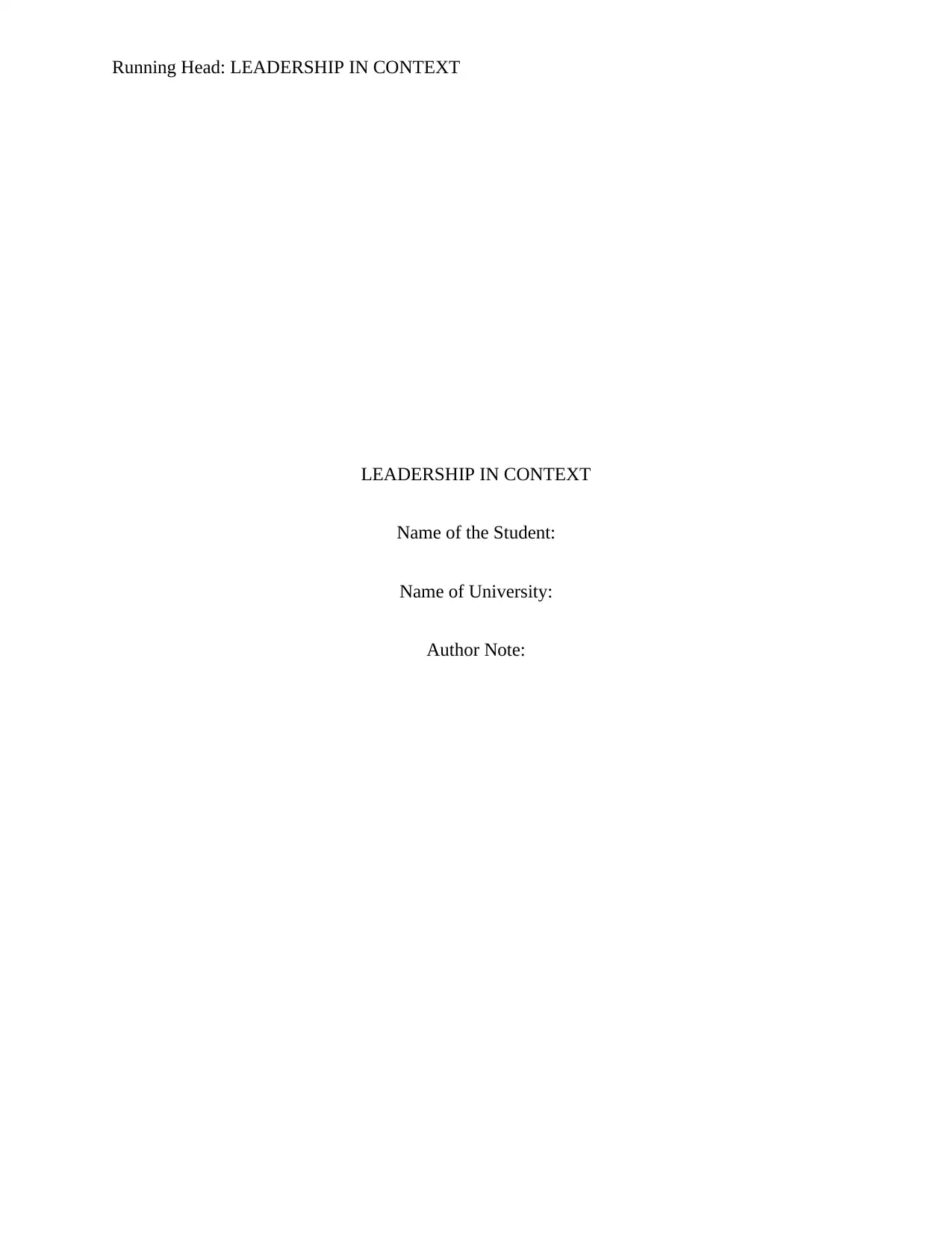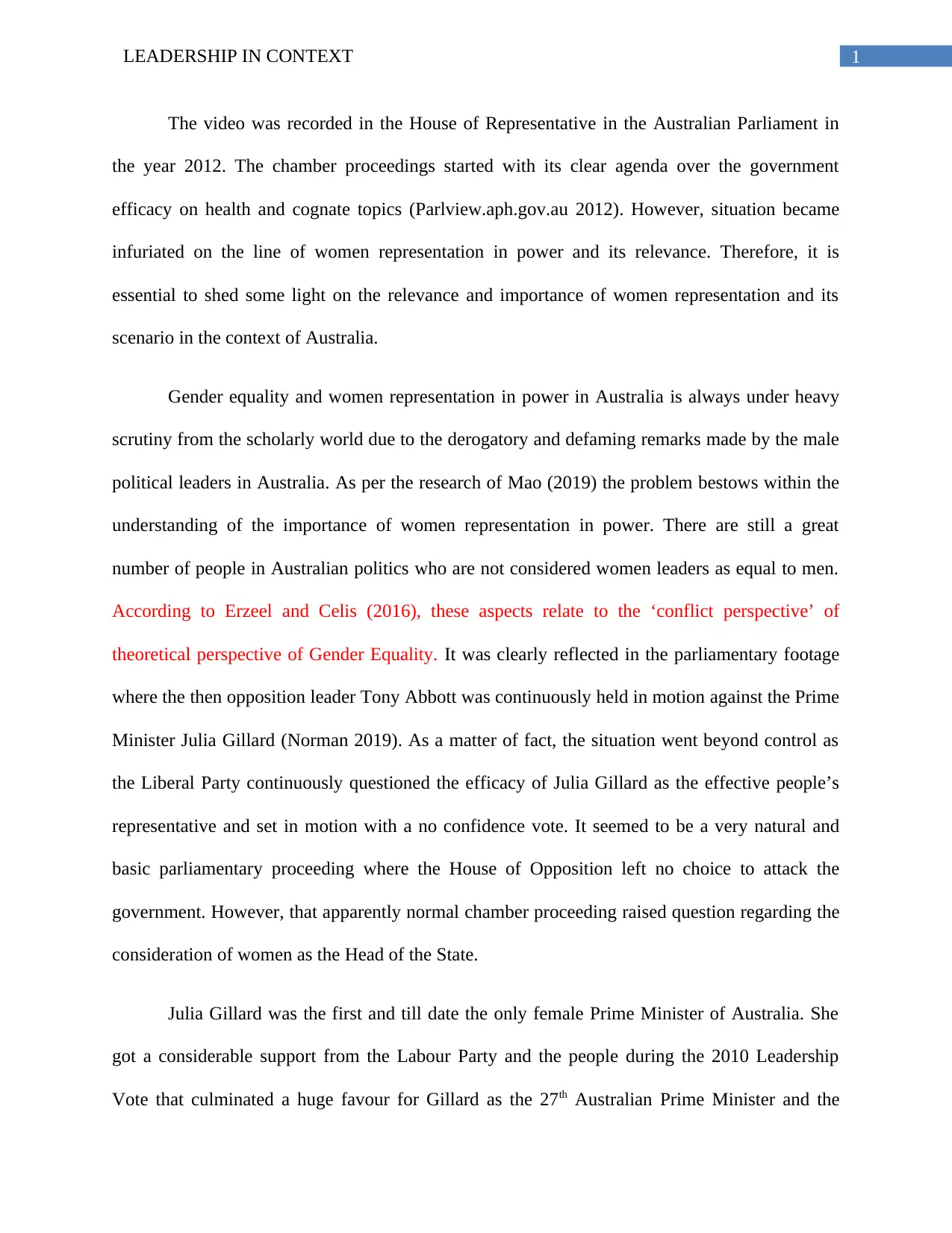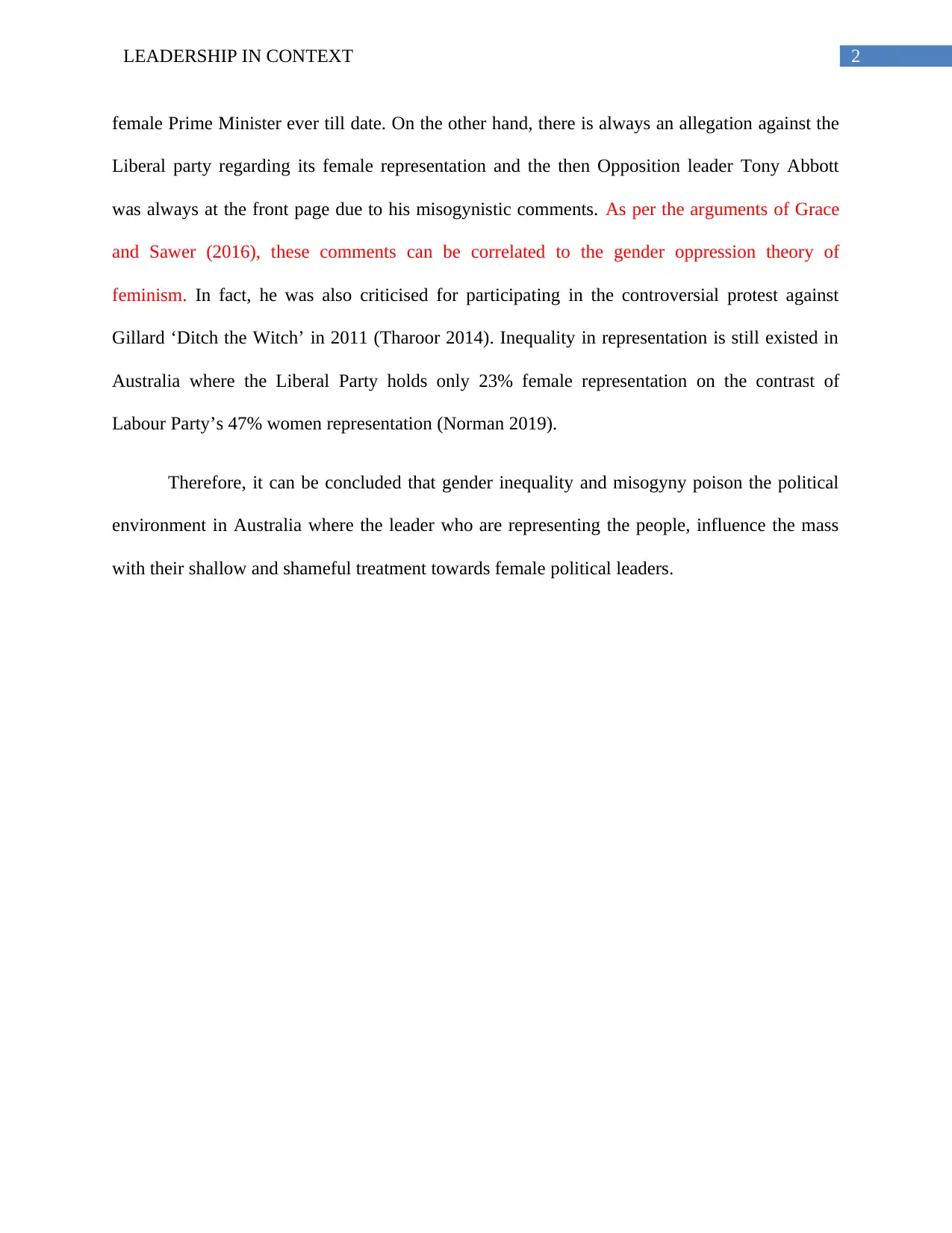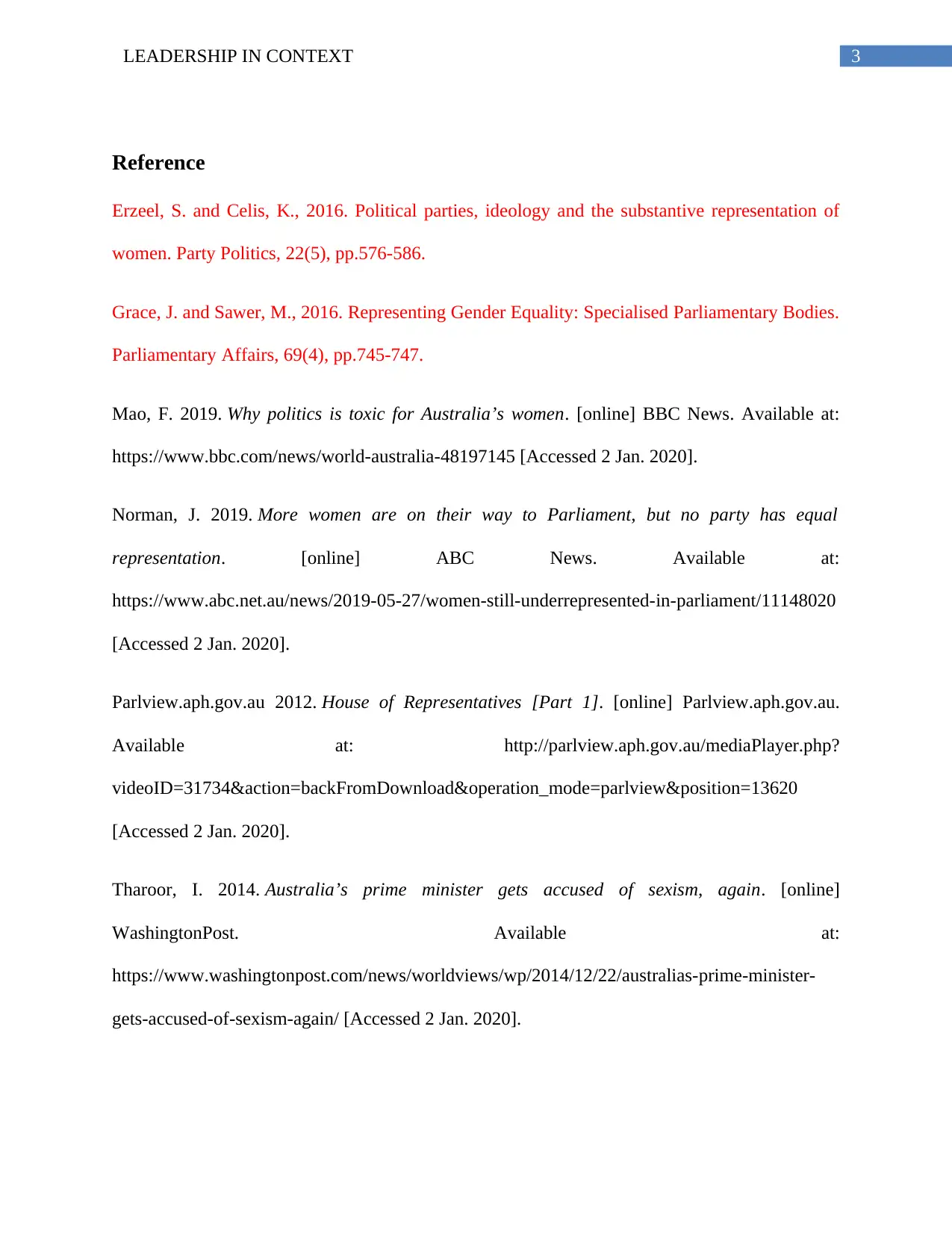Leadership in Context: An Analysis of Gender and Political Discourse
VerifiedAdded on 2022/09/01
|4
|759
|20
Report
AI Summary
This report analyzes a speech delivered in the Australian House of Representatives in 2012, focusing on the context of gender representation and leadership. The assignment examines the heated debate surrounding the role of women in politics, specifically referencing the actions and comments of then-Prime Minister Julia Gillard and opposition leader Tony Abbott. It explores the significance of women's representation in power, highlighting the challenges of gender inequality and misogyny within the Australian political environment. The report references relevant academic literature to support its arguments, including the 'conflict perspective' of gender equality and the gender oppression theory of feminism, and concludes with a discussion of the implications of these issues on political discourse and leadership.
1 out of 4








![[object Object]](/_next/static/media/star-bottom.7253800d.svg)